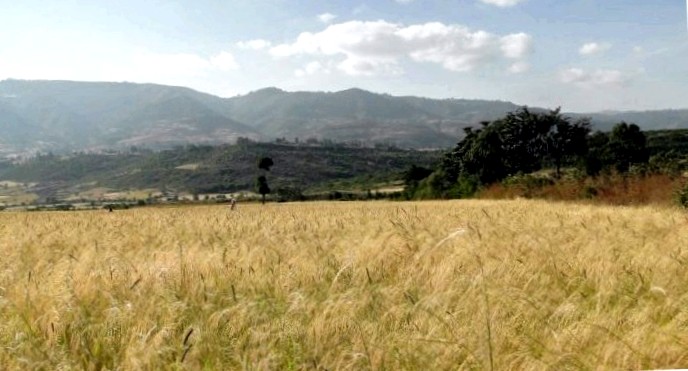
Dwarf Yellow Field in Athiopia. Image: Bernard Gagnon / CC BY-SA 3.0
Degenerated soil, shrinking gers and extreme weather events loose more and more dancing crises. There are solutions
Agriculture is the most important activation field for most inhabitants of Africa. In the Congo, as well as all people achieve their income from this, in other countries, it is at least more than two thirds of the population. But land is getting scarce. Two-thirds of all agricultural enterprises are less than a hectare. In Kenya, a farmer just half a hectare, barely enough to provide herself, let alone to achieve surprise through the sale of arable frames.
The Humanitar Organization Care International pointed down in 2018 to Humanitar Crises in 2018, which were hardly or not mentioned in Western media, including unrest in Athiopia, in the Democratic Republic of Congo (DRC) and Sudan.
Thus, in Athiopia, despite the economic upswing still 30 percent of the population still under the poverty line. Thousands of escape from the neighboring temperatures to the country. And always destroys Durren and overflowing the harvesting, while prices are rising for food.
Agricultural intensification after western model no probate medium
On the one hand, there is a little fertile land for the production of foodstuffs. On the other hand, high-yield sowing, mineral and pesticides for African small farmers are neither available nor affordable, the Agraroconomin Susanne Neubert resumed from the seminar for land development (SLE) at the Humboldt University of Berlin. Pesticides are also ecological and risky risky.
An agricultural intensification after western model, however, hundreds of millions of people became unemployed. Because often, modern agricultural investment aligns more damage than it uses. The result were rural evaluation towards the city or even escape to Europe. In Algeria, for example, in recent years to the most important tomato exporter, every year 300 will be.000 tons of tomatoes grown. In order to get more water on more and more water, the wells were dug up to 300 meters deep. As a result, the groundwater level fell. At the same time, thousands of flights suffered in the Algerian Waste under Water Deficiency.
Another way is Morocco. The country invests billions of dollars in his small farmers — in Dunger, knowledge and new plant varieties. Investing in small olive solfactics or. In the processing of dates and olives their cultivation should make more attractive. A modern infrastructure should provide for more exporting products.
Animal and mixed crops increase ground health
In vast parts of the continent take fertile soil, biodiversity, forest and pastures dramatically. The challenge is now to rese the degraded soil profitable entrepreneurs and at the same time manage sustainably. Whole landscapes are still dominated by monocultures, a heritage from the colonial period.
Accordingly high is the risk of bad infestation. Thus, the army worm destroyed in 2016 potatoes, peanuts, soy and corn in the west, suds and east of Africa. In Zambia alone, he destroyed 125.000 hectares of cornfields and thus around 70 percent of the harvest. Even chemicals could not affect the shadling at that time.
The cultivation of mixed cultures with multi-integral fruit consequences using crap, compost, mulch and useful life, on the other hand, demands ground health. He regulates the fabric circulation and prevents Schadlingen. So, for example, the Sahara, where cotton fields alternate with corn or sorghumfields and small walls, significantly fewer shadling.
Water — a scarce good
So that organic soil substance can build up at all, it needs rain. In many regions, it is always often a few, such as in the Chadsee region, which made in the youngest past with humanitarian catastrophes as a result of terrorism, poverty and climate change of themselves.
The water surface of the lake, which supplies around 38 million people with water, was between the 1960s from 25.000 on 4.800 square kilometers shrunken in 2014. More and more residents of the residual states Niger, Chad, Cameroon and Nigeria remove the lake too much water. Shrink the fish populations, so that dry fish as an important source of protein for the inhabitants is becoming increasingly rare and more rare. While the landscape in Borno State in the northeastern Nigeria’s earlies almost completely completely farmed by agriculture, there is now no farming still livestock in many places.
Also in the east, at the Horn of Africa, where 80 percent of the sedentic farmers in dry regions of subsistence agriculture is prudent water management with economical, efficient use of consecutive than ever.